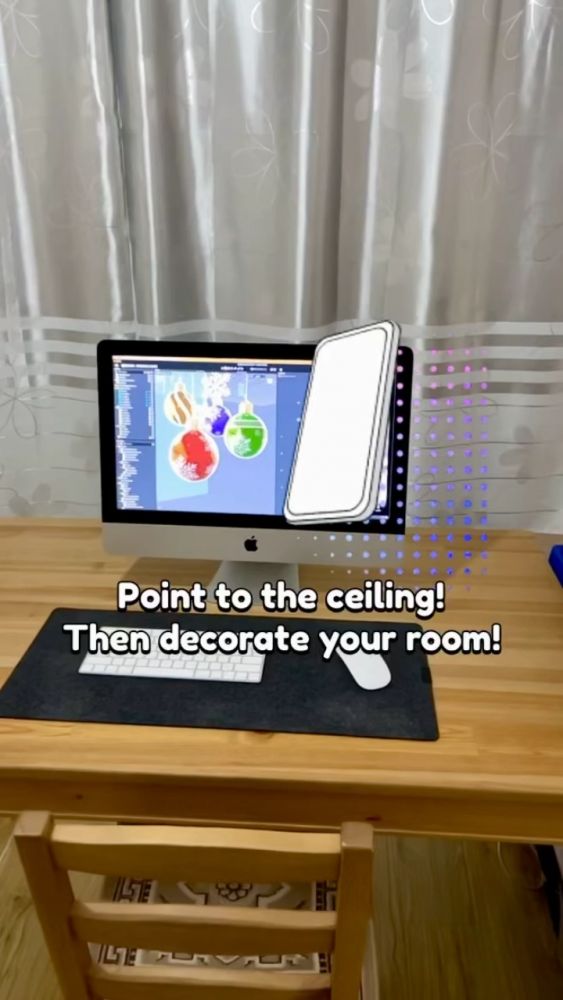

#Lens studio lidar professional#
The Professional and Enterprise versions of 3D Scanner App contain project functionality to assist in managing and aligning multiple scans along with 3D Objects. Then during construction itself, mobile scanning allows progress to be easily tracked by taking quick scans of work-in-progress that then can be compared to plans or aligned to a master scan of the project. Mobile 3D scanning allows users to quickly provide base scans of a room or outdoor area where new structures are going to be added. For example in many construction projects, a 3D scan of an existing structure or a building in progress is compared to a 3D model many times on-site in AR & VR. In many industries, a Digital Twin or virtual representation is an integral part of their 3D workflow. Additionally, there are many services and applications (like CloudCompare) where multiple Point Clouds from different sources can be combined. Point Clouds tend to be a more common industry format for GIS applications. In workflows where scans need to be georeferenced with Lattitude, Longitude, and Altitude, 3D Scanner App can provide this meta-information with GPS Tagging Enabled. As such, 3D Scanner App supports XYZ, PLY, LAS, and many other. Additionally, Point Cloud formats are the standard for many applications and industries. The app offers easy export of a 3D scan as meshes to open formats like OBJ and DAE to new mobile standards USDZ (Apple) and GLTF/GLB (Android) to proprietary formats like FBX. What is critical to these interactions is file-format interoperability, a place where 3D Scanner App leads the field.

The 3D scan is often imported to a CAD application (Autocad, Revit, SketchUp, etc) or a 3D design program (Blender, Maya, 3DMax, etc).
#Lens studio lidar software#
However, many use-cases involve other software and desktop applications in the workflow. ReCAP, Cesium, ERSI, etc) or a general one ( SketchFab, P3D.in, etc). The object is often shared or uploaded to a company or an industry cloud service (i.e. Leica, Riegl, FARO, Trimble, etc) or photogrammetry process.įor many professional applications, the captured 3D object or space is stand-alone, meaning that it is only used to capture measurements or used as a visual reference.

As such, some professionals are in a position to be able to only use a mobile 3D scan, while others use it in conjunction with a high-precision scanner (i.e. (plus sometimes they are just in your pocket)Īcross industries, the precision and fidelity requirements vary widely for 3D captures. While the output from these new devices might be considered low-fidelity compared to existing high-precision or terrestrial LiDAR scanners, their accessibility and ease of use make it a valuable tool in a professional’s 3D capture arsenal. Now LiDAR sensors on consumer phones like Apple’s iPhone and iPad are revolutionizing reality capture and 3D workflows. Until recently, this typically required expensive sensors or robust photogrammetry techniques and long processing times. “Mobile LIDAR has changed everything in consumer and enterprise reality capture”ģD Scanning and Reality Capture are an ever-increasing part of many professional workflows. In this article, Laan Labs wanted to share some background on the space and a general overview of how organizations both large and small leveraging this technology. Many of the app’s 1.5 million users (as of July 2021) are professionals who are utilizing its robust features in their business or workflows. The iOS app lets users capture objects and spaces in 3D, edit and refine meshes and point clouds and share them in several formats. Mobile 3D scanning had long been a company goal and when Apple added a LiDAR sensor to select devices in 2020, we released 3D Scanner App. Laan Labs has a long history of working with organizations and professionals in computer vision and 3D understand and reconstruction.


 0 kommentar(er)
0 kommentar(er)
